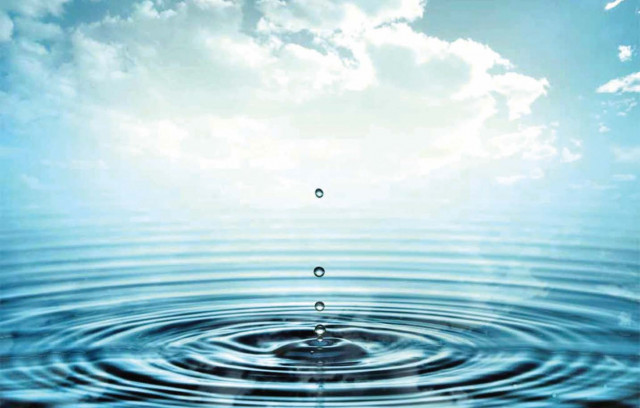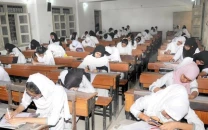Water boon: As hydrants closed, a third of supply restored
KWSB shuts down its own hydrants so it can track down illegal ones.

Clifton, Defence and surrounding areas now receive 9 million gallons of water per day (MGD), as compared to 6 MGD nearly two weeks ago, according to a CBC official, Aziz Suharwardy.
The Karachi Water and Sewerage Board (KWSB) shut down its own 19 hydrants across the city. They were put in place to supply areas which were not connected to the pipeline network.
Although everyone is allowed to take water from KWSB’s hydrants, with time people started setting up illegal hydrants in their homes and other places and sold the water. This created a shortage in areas connected to the pipeline network.
Since the water board couldn’t keep a track of all the tankers and suppliers who took water from legal or illegal hydrants, it decided to shut down the hydrant system once and for all. Now that no hydrants are supposed to work, it’s much easier for the officials to hunt down illegal hydrants and shut them down.
The crackdown triggered protests by businessmen involved in operating over 5,000 water tankers. On March 8, they gave the board and ultimatum of 24 hours to reopen the hydrants or face the city’s entire fleet of tankers parked outside the KWSB headquarters at Awami Markaz.
The strike did seem to have an effect and six KWSB hydrants were reopened, according to the board’s chief engineer, Iftikhar Ahmed. They included the ones at Nipa Chowrangi, Garden, Sakhi Hasan and Landhi.
“But we also shut down 150 illegal hydrants last month,” he said. “Most of them were in Baldia, Orangi, Korangi, Landhi and Ayub Goth. At some places people have built actual tunnels underneath their homes for stealing water and selling it for a commission.”
But to Suharwardy, the strike did not make sense. He said that the increase in water supply meant that the residents didn’t have to rely on private water tankers.
He said that water supply in Clifton and DHA had indeed increased because of the closure of hydrants. “I appreciate the decisive action the water board took against illegal water connections.”
Karachi’s total water consumption stands at 650 MGD while the demand is 1,080 MGD. To add to the problem, a large part of the city is not even connected to the pipe network and people rely on water tankers and illegal connections.
Meanwhile tankers have started charging more from the people they supply water to. In Gulshan-e-Jamal, which is a part of Faisal Cantonment, around 5,000 homes pay Rs2,200 for a 2,000 gallon water tanker, for which they paid Rs1,500 only a few days back. And the supply is not even regular, as a resident said. “The tanker owners are scared as well. They say that they are selling water in black so they come at 3 in the morning.”
The general secretary of Karachi Water Tankers Owners Welfare Association, Hazoor Khan, said the city will remain dependent on the tankers for meeting the demand on water. “One example is DHA. We still get calls from there,” he said. “KWSB should open up at least two more hydrants to ease the shortage.”
Published in The Express Tribune, March 26th, 2012.



















COMMENTS
Comments are moderated and generally will be posted if they are on-topic and not abusive.
For more information, please see our Comments FAQ